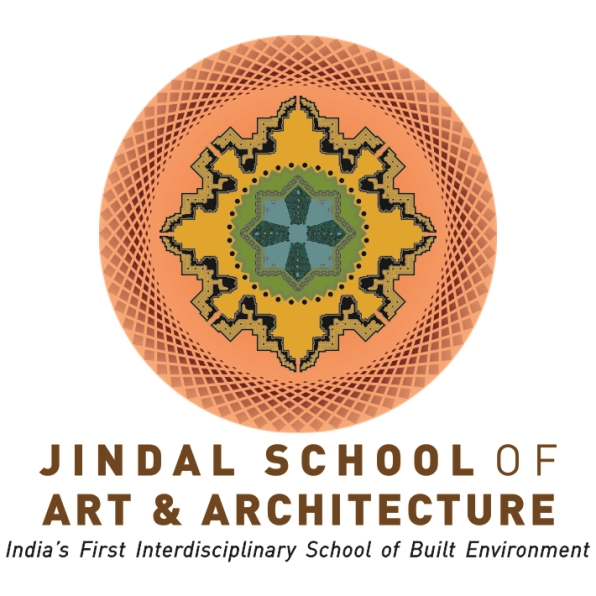
JSAA Offerings 2021
O. P. Jindal Global University (JGU)
Following are the courses what we offer at Jindal School of Art & Architecture. For more/detailed information on the programs, please visit www.jsaa.edu.in.
Bachelor of Design (B. Des):
- Interior
- Urban
- Community
Duration: 4 years
Entrance Exam: JCAT ( Jindal Creative Aptitude Test)- Qualified Score-40%
Eligibility: 12th with min 50% Marks, stream- Any – Board-any recognize board
Appearing or completed in 2021
BA (Hons)- Built Environment Studies (Architecture Studies)
Duration: 3+1 years
Entrance Exam: JCAT (Jindal Creative Aptitude Test) - Qualified Score 40%
Eligibility: 12th with min 50% Marks, stream- Any – Board-any recognize board
Appearing or completed in 2021
The Jindal Creative Aptitude Test (JCAT)
JCAT is the qualifying examination for entrance into the Bachelor of Design (B. Des.) and Bachelor of Arts in Built Environment (B.A. BES) programs offered at the Jindal School of Art and Architecture, Sonipat, Haryana.
JCAT Schedule:
Cycle 2 – MAR 2021
| Jindal Creative Aptitude Test (JCAT) Exam Schedule |
| Last Date to Apply |
March 20th |
| Part A Exam |
March 26th -28th |
| Part A Result |
April 3rd |
| Part B (Interview & Portfolio) |
April 2nd Week |
| Part B Result |
April 2nd Week |
About JCAT Structure:
JCAT Structure:
Part “A” is structured around analytical thinking and reading of visuals and texts. It tests how students can relate various forms of knowledge about the built environment through objective and subjective questions.
Part “B” is Interview & Portfolio Review, the interview / portfolio review is an integral part of the admission process at the Jindal School of Art and Architecture. During the interview process each candidate is assessed for their suitability and commitment to enter the program. In addition to this a key component of the interview is the review of the portfolio of works of the applicant.
Part A:
The JCAT Part “A” will be conducted online, with no paper component. It will be a 2-hour-long test, nominally divided into four section of 30 mins each, and there will be no negative marking. The typical questions will be as described below:
Section I – 30 mins, with about 15-20 questions (Weightage 20%)
This section will comprise of multiple-choice analytic questions. These questions will typically assess your ability to make inferences from data, interpret graphs and diagrams, understand concepts, and discriminate between fact and opinion.
Section II – 30 mins, 5 or 6 questions (Weightage 25%)
These will be image-based, non-verbal type analytic & comparative questions. This section will assess your ability to use critical thinking and logic construction towards problem finding and solving.
Section III – 30 mins, Two sets of questions (Weightage 30%)
This section will have images of everyday objects/structures. Selected parts/elements will be tagged, and you will be expected to describe what you see – connections, materials used, steps in construction / assembly of the object/structure. This section will assess your ability to ‘deconstruct’ everyday objects/structures and demonstrate your ability to figure out how things are put together.
Section IV – 30 mins, eight to 10 questions (Weightage 25%)
This section will have two sets of complex text to engage with, with accompanying questions as prompts. You will be required to demonstrate careful analysis and critical interpretation of this complex text through your response to questions.
Part B:
Interview & Portfolio Review
Upon receiving your JCAT scores from Pearson VUE, you will be asked to appear for an Interview & Portfolio Review at a scheduled time. Kindly do make sure that you are present five minutes prior to the scheduled time.
We review your portfolio to assess the following:
Your ability to (re)present and Describe:
Your “description” could be in form of sketches, paintings, drawings, photographs, videos, audio. What the assessment shall check is your ability to work with multiple media – mastery is not what we expect; innovative use of multiple media is appreciated and so is the ability to work with different media and how well you describe the things through representation.
Your Ability to Make and understand how things are Made:
We will assess your portfolio to see how much you are interested in making things as well as understanding how they are made. Making could be in any form, it could be a basket you have made, a thing that you have fixed around the house, a system that you have made, or even a recipe that you have prepared. We would like to see it as part of your portfolio. Document it, the thing you have made as well as your process of making it. Any form of documentation is allowed, it could be a video, a Do-it-yourself (DIY) video or drawings, or any other media you choose. The Process of making is what we want to see.
Your Ability to craft narratives, tell stories using multiple media:
We will assess your ability to craft stories, narratives, to include your voice along with others. This story could again be in any media, it could be all textual, audio-video, pictorial, just voice – all media are welcome. What we want to see, and judge, is your ability to describe things and tell wonderful stories.
Admissions Query:
For any query related to admissions into our B. Arch, B.A. (Hons.) Built Environment Studies & Bachelor of Design (B.Des) Programmes & hostel facilities, please contact.
Mr. Azad Ali
Director-Admissions & Outreach
+91 8930302097
Email: azad@jgu.edu.in
Ms. Priyanka Kharola
Asst. Manager- Admissions & Outreach
+91 7419741843
Email: pkharola@jgu.edu.in